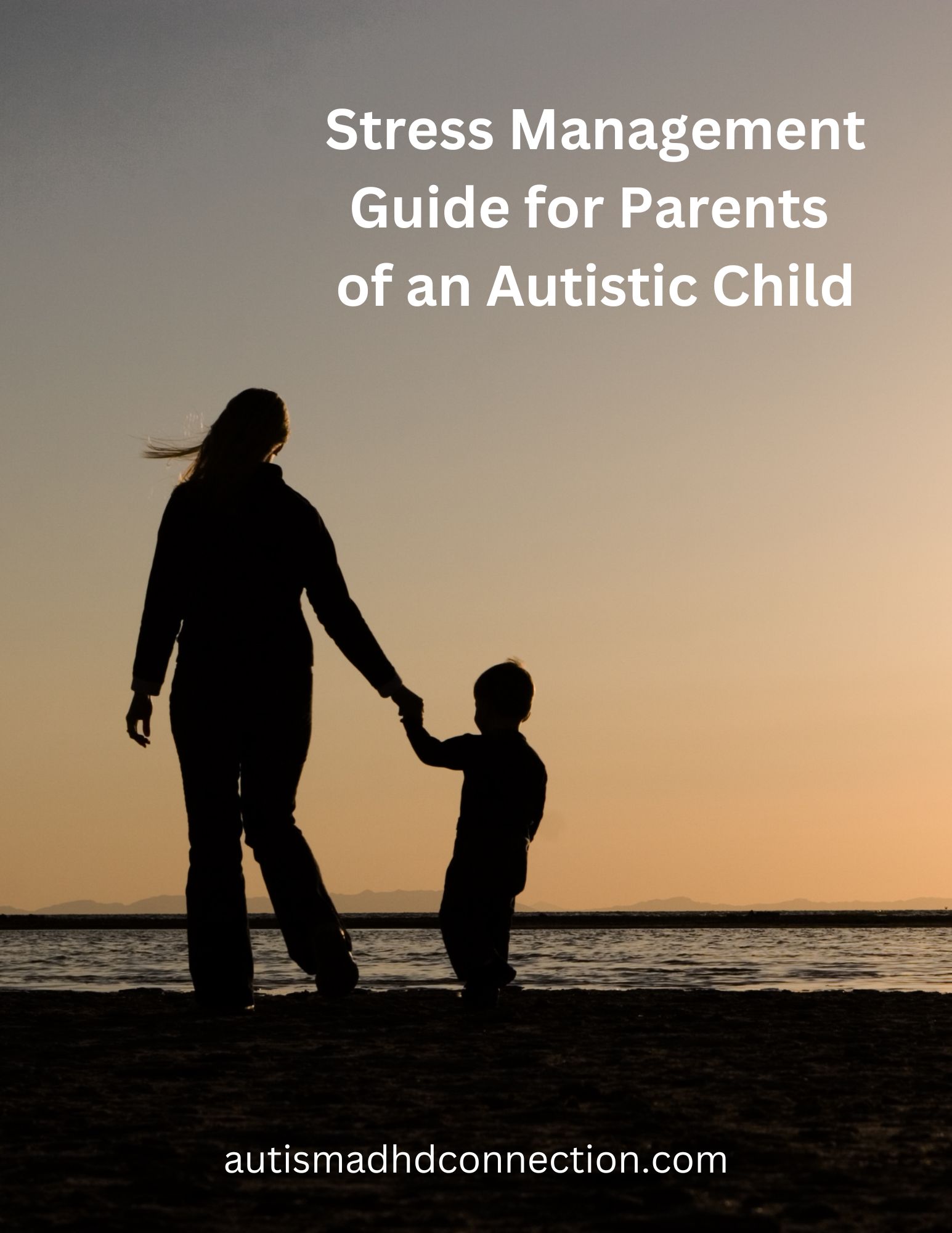One of the most frightening things to happen as a parent is to find your child missing. Or to watch them run away from you in a busy parking lot, store, street or other place. Yet, as parents of autistic children, many of us have experienced this too many times. It’s called elopement, or wandering off, and it can be dangerous for a child with autism. How can you prevent elopement of your child with autism and keep them safe?
What is elopement?
The National Institute for Elopement Prevention and Resolution defines elopement as “when a patient or resident who is cognitively, physically, mentally, emotionally, and/or chemically impaired; wanders away, walks away, runs away, escapes, or otherwise leaves a caregiving facility or environment unsupervised, unnoticed, and/or prior to their scheduled discharge.”
A 2012 study conducted by Autism Speaks and Interactive Autism Network conducted a parent survey and found that nearly half of the participants’ autistic children attempted to elope.
Why do children with autism elope?

Children with autism elope for a variety of reasons. Those can include:
- Escaping from stressors to find a place where they feel safer or calmer.
- Running toward an item or place they want.
- Enjoying the chase when a parent or caregiver runs after them.
- Wanting to look at something they see closer, such as a street sign.
- Following an impulse to run and explore.
Our son J eloped often when he was younger. He mostly would run away when we got out of our car, or he would run toward a street. Because of his ADHD, it was more impulsive, and he would just go. We had to put several measures in place to keep him safe. For instance, if I was shopping, I would grab a cart from a nearby cart corral in the parking lot and place him and his brother in the cart as soon as I got them out of the car. We also made him hold our hands whenever we went someplace. He also was not allowed to play in our front yard without us present until he was much older. We made him stay in the fenced-in backyard to play. Thankfully, he didn’t have the urge to leave the backyard or go outside the house without us knowing.
Why is elopement so dangerous?
Elopement poses many dangers for children with autism. One of these is the risk of drowning. According to the National Autism Association (NAA), drowning is one of the leading causes for people who have autism. In fact, they noted more than 90 percent of accidental drowning deaths were children with autism under age 14 and who had eloped (2009-2011).
One reason for this is that about 48 percent of children with autism are more likely to elope – or wander away – from a safe place than their siblings without autism. The NAA also stated that 32 percent of parents reported “an accidental near drowning” of their child with autism because they eloped. This is one reason why teaching your child to swim is so important.
Other dangers include being drawn to vehicle traffic, being taken by someone, and getting lost and not knowing their address or phone number to tell the authorities to help them go home.
Ways to prevent elopement in your child with autism
If your child with autism is prone to elopement, how can you prevent it from happening? Try these tips.

1. Lock your doors, windows and outside gates
You may need to install additional safety locks to your windows and even deadbolts to doors leading to the outside in your home. You also may want to place a padlock or another type of lock to your gates for a fence. (If you don’t have a fenced-in yard, you may need to consider that as well. Our fence was enough to keep J in our yard, but we would have added a lock if necessary to the gate.)
2. Install an alarm system that alerts you when a door is opened
We installed an alarm system in our home not only for overall security, but also so that we could hear if any doors or windows were opened. We had sensors on all the doors leading to the outside, and we added sensors to our windows in our main level and in J’s room since one of his windows opened to the roof over our front porch.
3. Keep a journal of elopement experiences to identify patterns
If your child attempts to elope on a regular basis, keep a journal and write an entry for each incident. Be sure to note what was happening at the time of attempt, your child’s behaviors, your child’s desire to elope and any other useful information. This may help you identify patterns, especially any behaviors to look for before your child attempts to elope.
4. Always hold your child’s hand in a parking lot

This was a non-negotiable rule for us with J. Once we exited the car, he had to hold an adult’s hand at all times until we were in a safe place. This prevented him from darting in front of cars in parking lots and running away from us.
5. Check on your child frequently
If your child is playing outside or in another part of the house away from you, check on them frequently. This way, you will know they are where they are supposed to be.
6. Consider a monitor device for your child
If your child attempts to elope often, it may be worth putting a GPS monitoring device on them for their safety. Here are three options that are popular for children with autism.
Jiobit – Smallest Real-Time GPS Location Tracker for Personal Safety (affiliate link)
AngelSense Personal GPS Tracker (affiliate link)
Tracki Mini Real time GPS Tracker (affiliate link)
7. Develop a safety plan so you know what to do quickly if your child wanders
Having a safety plan prepared can save you valuable time. It should include a list of neighbors and friends you can reach out to and activate searches quickly. It would be good to set up a text distribution list that is already created so that you can send it fast. Also, reach out to your local police department and get advice from them on how to best initiate their help and the timing. Ensure you have recent photos that you can provide authorities if needed. Keep a list ready about your child’s favorite places and activities as well as a description of your child. You can even have emergency cards printed with this information and your child’s photo so that you can hand them out as you search.
8. Ensure your child wears identification and that they know their home address and phone number
We used to practice saying our home address and phone number in the car so that our sons knew where we lived and how to reach us. It’s such an important safety step for all children, but especially for those with autism who tend to elope. If your child is non-verbal or has a hard time remembering your address and phone number, you may want to consider wearable identification such as a bracelet or necklace.
Premium Autism Autistic Asperger’s Bracelet (affiliate link)
Supcare Medical Alert Necklace (affiliate link)
9. Teach safety commands to your child and have them practice following them
Teach your child to understand the command “stop” and what you expect of them. Should they “freeze” in position, sit down or walk toward you? Role play with them and have them practice following the command.
10. Post stop signs on your outside doors in your home
Autistic children are visual. Putting STOP signs at their eye level on your doors leading outside could remind them they are not to open the door or leave without permission.
11. Teach your child to swim
Teaching your child to swim can save their life one day. Many children with autism are drawn to water, yet they tend to have more difficulty swimming. If you haven’t already, sign your child up for swim lessons. Read this article for more information about teaching your autistic child to swim.
12. Talk to your child’s therapist about whether functional communications training may help your child
Functional communications training (FCT) can be used to help change severe behaviors. A study by Dr. Jeffrey Tiger et. al published in Behavioral Analysis in Practice defined FCT as “a differential reinforcement procedure in which an individual is taught an alternative response that results in the same class of reinforcement identified as maintaining problem behavior. Problem behavior is typically placed on extinction (i.e., reinforcement no longer follows problem behavior).” Some therapists have used FCT effectively to help change elopement behavior in autistic children. You may want to discuss it with your child’s therapist to determine if it could help your child.
Do you struggle with elopement of your child with autism? If so, what has helped prevent wandering away for your child? Add a comment below so that we can share and encourage one another on this journey.













